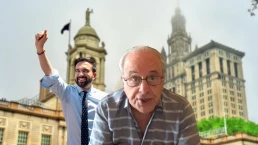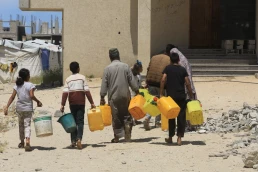Nationwide, voters will have the power to dramatically shape the future of abortion policies in their state. Here’s what’s at stake:
by Alexandra Martinez, Prism
The fate of abortion rights and abortion access will be determined this November at the state and local level during midterm elections. Since the Supreme Court overturned Roe v. Wade in June of this year, most abortions have been banned in 14 states and are actively threatened in seven. Now, voters will directly influence the future of abortion in five states, while local gubernatorial and judicial races across the country will similarly shape the makeup of each state’s abortion access—either acting as stopgaps between the state and abortion bans or paving the way for expanding an already staggering abortion desert.

“It’s never been a more important time for voters to really make our voices heard, and the time is now for candidates to have the boldest plans that they can have on abortion rights and access,” said Morgan Hopkins, interim executive director of campaigns and strategies at All* Above All Action Fund. “It’s not enough to say that you would restore protections or restore the right to abortion, especially if you were in a state that has had restrictions for decades. We really need to see full, comprehensive policy platforms from all candidates running for office.”
All eyes will be on battleground states like Pennsylvania and Florida, where conservative legislators have continuously threatened abortion rights. In Pennsylvania, the GOP-controlled General Assembly has repeatedly tried to pass an abortion ban. In July, they sidestepped Democratic and pro-abortion Gov. Tom Wolf’s veto power by approving a constitutional amendment that would allow for a statewide abortion ban in the future. With Wolf’s term ending this January 2023, voters will have to choose between two gubernatorial candidates with starkly different positions on abortion access.
Recent Posts
“Arrest Now, Ask Questions Later”: Why Did L.A. ICE Agents Arrest and Jail U.S. Citizen Andrea Velez?
July 3, 2025
Take Action Now “They didn’t have vests that said ICE or anything. Their cars didn’t have license plates. … Just because of the color of our…
Trump’s Big, Beautiful Bill Is Naked Class War
July 3, 2025
Take Action Now Trump’s “Big, Beautiful Bill” trades tax cuts on millionaires for the dissolution of society.By Hamilton Nolan, In These Times…
Mayor Mamdani’s First Day, A Zero Hour Conversation With Richard Wolff
July 2, 2025
Take Action Now If elected, what would Mayor Mamdani do on his first day in City Hall? How would a democratic socialist govern as a big-city mayor?……
The U.S. Is Funding A Bloodbath At Gaza Aid Centers
July 2, 2025
Take Action Now The admin just gave $30M to GHF, the organization at the center of charges that Israel is weaponizing assistance and shooting at…




